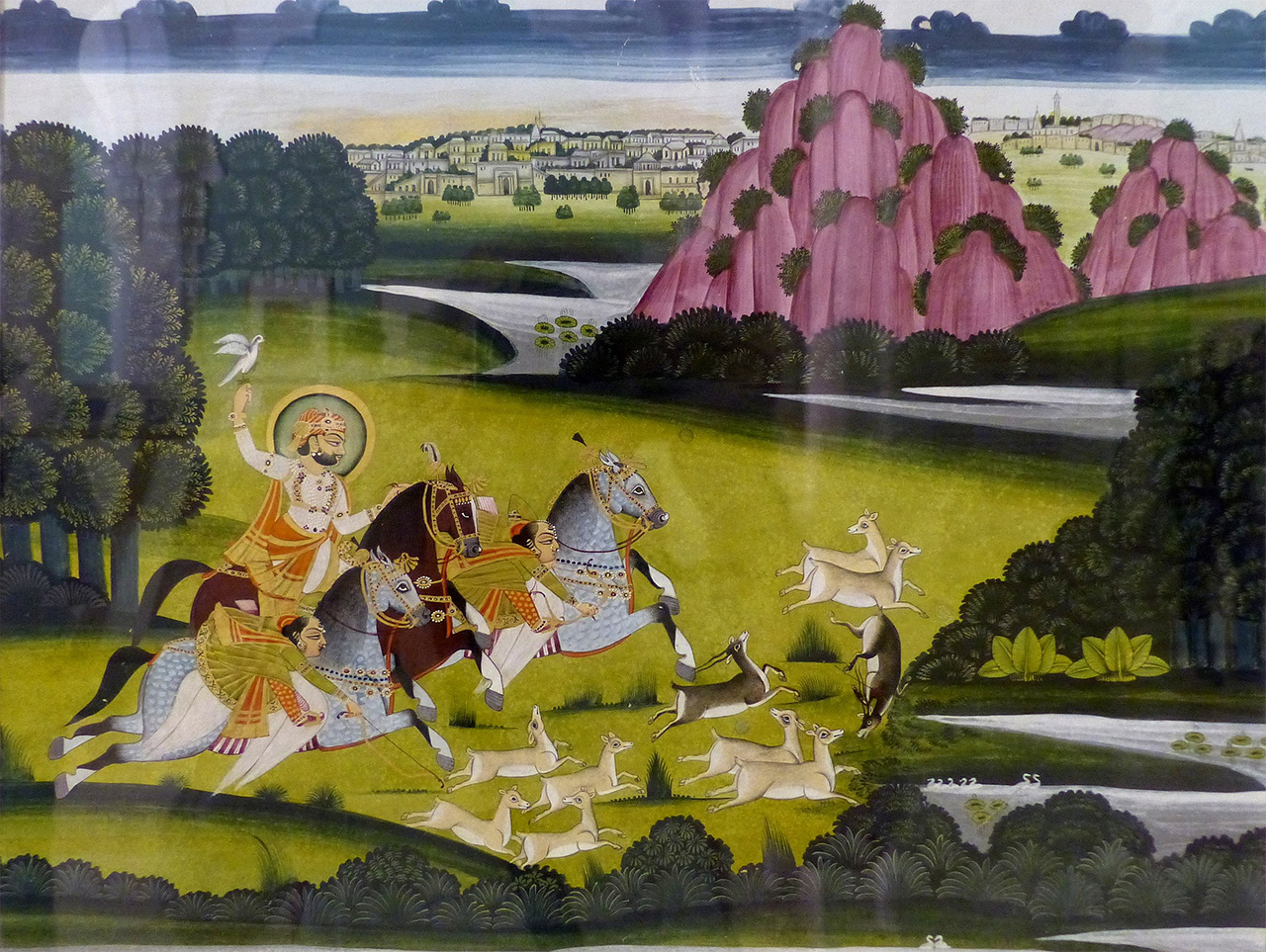
The word Rajput means ‘son of a king’. Rajputana refers to the ‘land of the Rajputs’. The Rajput clans made up of different groups (not called Rajputs then) had begun to settle in the areas of Rajputana from the 6th century A.D. Much of Rajputana of yore is in present day Rajasthan state, Haryana and Gujarat, Uttar Pradesh, Himachal Pradesh and Madhya Pradesh in the Indian Republic. They claimed to have descended from the Suryavamshi race (descent from the solar deity Surya), the Chandravamshi clan (descent from the lunar deity Chandra) and Agnivamshi clan (descent from the fire deity Agni). The term Rajput came to denote a social class, which was formed when different tribal and nomadic groups became land owning aristocrats, and became the ruling class. The Rajputs came to be associated with valour, bravery and physical strength, and the art which came from the region reflects these traits with an underlying sense of pomp and ceremony as well.
History of Rajput Painting

The Rajasthani Schools of painting flourished between the end 16th and 19th centuries in the princely states, the rajwade and the thikanas, noble territories, in Rajputana India. The School evolved from wall paintings and Western Indian manuscript illustrations, though Mughal, European and Chinese influence became evident in the later years of its development.
Suggested Read – Miniature Paintings of India: Evolution of Different Art Schools
The main schools of Rajasthani painting consist of four main schools that have sub-styles of the various princely states. Each princely state maintained their own atelier of artists, in spite of wars or changing political situations. The Mewar School contains the Chavand, Nathdwara, Deogadh, Udaipur and Sawar styles of painting; the Marwar School comprising the Kishangarh, Bikaner style of painting from Bikaner, Jodhpur, Nagaur, Pali and Ghanerao styles, the Hadoti School with the Kota, Bundi and Jhalawar styles and the Dhundar School of Amber, Jaipur, Shekhawati and Uniara styles of painting. The Rajput rulers and their life, Krishna Lila, Shiva and Parvati, the epics Ramayana and Mahabharata, the Bhagavata Purana, ballads and romances of yore, Ragamalas, seasons, landscape and animals are all in the repertoire of Rajasthani painting.
Themes in Rajput Painting

Rulers were often shown in their darbar or royal assembly, on horseback or in elephant processions with attendants, which showed their royal position. They were depicted hawking, hunting, sometimes playing polo as well. All these were royal pastimes. Rajasthani paintings were often politically charged and depict social values of the time. There have been paintings of the Haldighati battle between Maharana Pratap and the forces of Mughal Emperor Akbar. Some rulers had alliances with the Mughals, and helped them in their wars and were their vassals. However, the rulers wanted the paintings to portray their ambitions and establish their legacy. Therefore, paintings were often indicative of a ruler’s role and importance. The themes of the paintings were varied and interesting, showing the princes and rulers in different activities or purely as a portrait.
Let us check out some of these ‘royal’ and powerful depictions.

A portrait of Maharana Kumbha of Mewar (r. 1433CE – 1468 CE) with the halo of the sun painted around his head; also a crescent moon is a part of the painting from the collection of Royal Asiatic Society, London dated to the 16th/17th century.. He is holding his ceremonial sword, wears jewellery and is dressed in royal finery. A picture of a royal persona is evident. In the next painting from the collection of the Royal Asicatic Society, London, the Battle of Haldighati which was a historic battle of 1576 A.D, between Maharana Pratap of Mewar and Akbar’s forces led by Man Singh of Amber is depicted; the Rana lost the battle but escaped. The image from early 19th century by artist Chokha of the Deogarh School captures the fierceness of the combat.
Suggested Read – Folk Art Forms of India – Defining Our Cultural Diversity






So nicely written. It reminded me of my Jaipur visit when I saw the Rajasthani paintings in city palace. I wish I had read this informative piece of writing before my visit to appreciate those paintings better. Job well done Soma Ghosh, 👏👏👏
Thank You Isha 🙂